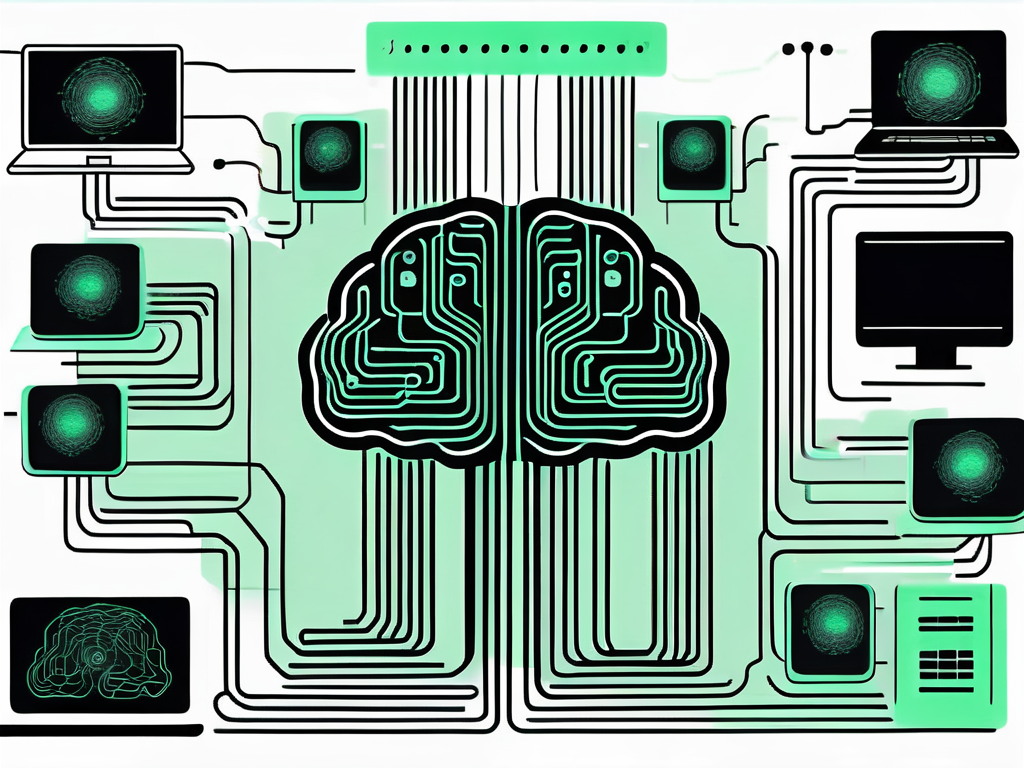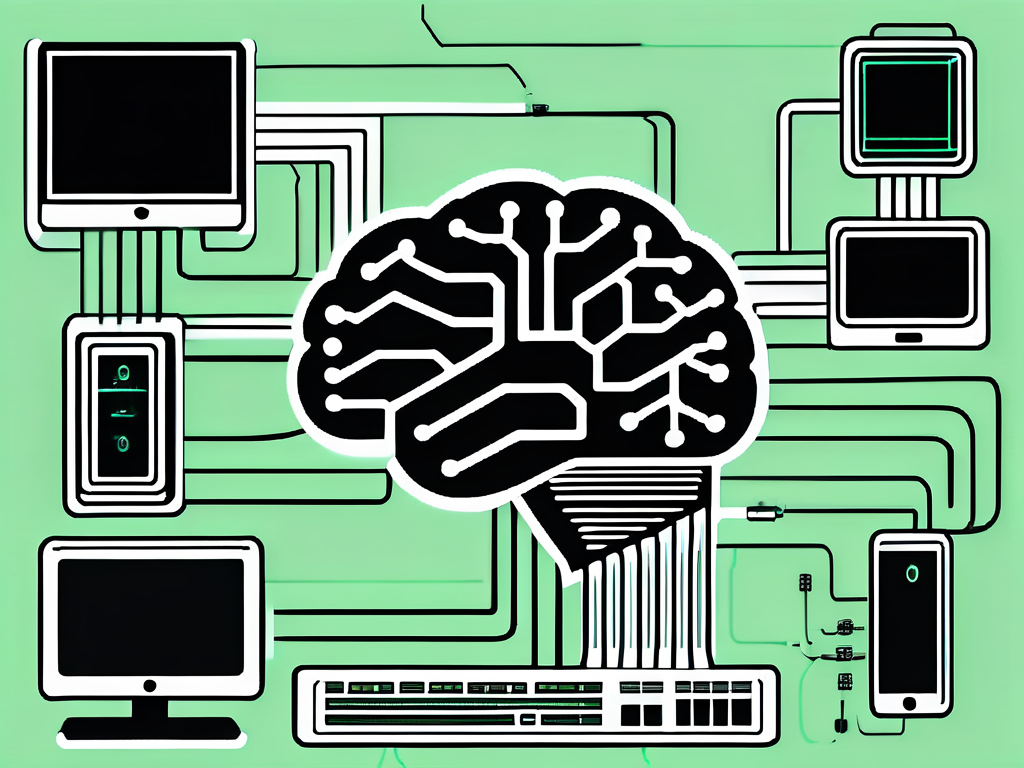Did you know that artificial intelligence (AI) is revolutionizing the way businesses operate? From streamlining processes to enhancing decision-making, AI offers a multitude of benefits for organizations.
In this article, we will explore how AI can be integrated into existing systems, helping businesses achieve new levels of efficiency and productivity. So, if you’re eager to unlock the power of AI in your business, keep reading!
- Seamlessly integrating AI into your current systems
- Getting your system ready for AI integration
- Understanding the importance of data for AI
- Keys to a successful AI integration
Integrating AI With Existing Systems
Integrating AI into existing systems can transform your business operations by enhancing efficiency, improving decision-making, and leveraging data more effectively. Here’s a step-by-step guide to seamlessly blend AI with your current infrastructure:
1. Assess Current Systems and Identify Opportunities
- Evaluate Existing Infrastructure: Start by analyzing your current technology stack, including software, hardware, and data management systems. Identify which components can benefit from AI integration, such as customer relationship management (CRM) systems, supply chain management tools, or data analytics platforms.
- Spot Opportunities for AI Enhancement: Look for processes that could be automated or optimized. For example, if your sales team manually tracks customer interactions, AI could enhance this by automating data entry and providing predictive insights.
2. Choose the Right AI Solutions
- Select AI Tools and Platforms: Choose AI tools that align with your specific needs. Options include machine learning platforms, natural language processing (NLP) systems, and data analytics tools. Ensure they are compatible with your existing systems and can integrate smoothly.
- Consider Integration Methods: Depending on your needs, you might integrate AI through APIs (Application Programming Interfaces) or custom-built solutions. APIs offer a flexible and often quicker way to connect AI capabilities with your existing software.
3. Develop a Seamless Integration Plan
- Create a Detailed Integration Roadmap: Outline the steps for integrating AI, including timelines, milestones, and key deliverables. This plan should detail how AI will be connected with existing systems and any changes needed in current workflows.
- Plan for Data Integration: Ensure that AI systems have access to the necessary data. This may involve syncing databases, setting up data pipelines, or implementing data cleaning processes to maintain high-quality inputs.
4. Implement and Test AI Integration
- Execute the Integration: Begin with a phased rollout to minimize disruptions. Start with pilot projects to test AI implementaition and functionalities and gather feedback. For instance, integrate AI into a specific department or function before a full-scale deployment.
- Monitor and Refine: Continuously monitor the performance of the AI integration. Use metrics such as system efficiency, user feedback, and impact on business processes to make necessary adjustments and improvements.
5. Train and Support Your Team
- Provide Training: Ensure that employees are well-trained in using the new AI-enhanced systems. Offer workshops, tutorials, and ongoing support to help them adapt to the changes.
- Foster Collaboration: Encourage collaboration between AI specialists and existing IT staff to address any technical issues and refine the integration process. This collaborative approach helps in smooth adaptation and troubleshooting.
Preparing Your System for AI Integration
In order to ensure a seamless integration of AI into your existing systems, it’s vital to start by evaluating system compatibility. Not every system is designed to work smoothly with AI, so it’s important to assess your technology infrastructure and determine if any changes or upgrades are necessary.

When preparing your system for AI integration, addressing potential challenges is crucial to ensure a smooth and successful process. Here’s a concise bullet list to guide you:
- Data Security:
- Protect Sensitive Information: Implement robust security measures to safeguard data privacy and integrity.
- Compliance with Regulations: Ensure adherence to relevant data protection regulations like GDPR or CCPA.
- Infrastructure Limitations:
- Assess Current Capabilities: Evaluate if your existing infrastructure can support AI requirements.
- Upgrade Requirements: Identify any necessary upgrades, such as enhanced storage or processing power.
- Computational Resources:
- Evaluate Resource Needs: Determine if additional computational resources or cloud services are needed.
- Optimize Performance: Implement strategies to optimize the performance of AI applications and manage resource use.
- AI Consulting Guidance: Collaborate with companies that offer AI consulting services to assess resource requirements and optimize cloud services for AI applications.
- Workforce Impact:
- Upskill or Reskill Employees: Provide training for employees to effectively leverage new AI technologies.
- Address Job Displacement Concerns: Communicate how AI will augment rather than replace human roles.
- Change Management:
- Implement Clear Communication: Communicate the benefits and impact of AI integration transparently.
- Develop Change Management Strategies: Use strategies to help employees adapt and address any concerns about job displacement.
The Role of Data in AI Integration
Data is the lifeblood of AI systems. For successful integration, it is crucial to emphasize the importance of quality data. Ensure that your existing systems are capturing clean, structured data to feed into the AI algorithms. High-quality data ensures accurate predictions and informed insights, enhancing the overall effectiveness of the AI integration.

Effective data management is a fundamental component of successful AI integration. Here’s a bullet list to guide you through key aspects:
- Data Governance:
- Establish Robust Practices: Implement data classification, storage, and privacy measures.
- Ensure Compliance: Adhere to relevant regulations to protect sensitive information.
- Training Data Quality:
- Utilize Diverse Datasets: Use varied and representative data for training AI models to enhance performance.
- Update and Refine: Continuously adapt training data to reflect evolving trends and patterns.
- Ongoing Data Quality Maintenance:
- Regular Monitoring: Conduct data quality checks and audits to identify and address inconsistencies.
- Rectify Errors: Implement processes to correct data errors before they impact AI performance.
Investing in robust data management practices will ensure compliance, protect sensitive information, and maximize the effectiveness of your AI systems, leading to improved decision-making and outcomes.
Ensuring the Success of AI Integration
To ensure a successful AI integration, focus on the following key aspects:
- Ongoing Monitoring and Updates:
- Regular System Monitoring: Continuously track AI performance to identify and resolve issues.
- Timely Updates: Implement updates to maintain optimal results and adapt to changes.
- Staff Training and Development:
- Educate Employees: Provide training on leveraging AI capabilities effectively.
- Enhance Skills: Offer opportunities for staff to develop their skills and work seamlessly with AI systems.
- Ethical Considerations:
- Address Data Privacy: Establish clear guidelines for protecting sensitive information.
- Mitigate Bias: Develop protocols to handle bias in algorithms and ensure fairness.
- Consider Job Impact: Evaluate and manage the implications of AI on employment.
By focusing on these areas, you can maximize the benefits of AI integration while maintaining a responsible and effective approach.
Implementing AI Solutions for Maximum Impact
Whether you’re looking to streamline processes, make data-driven decisions, or gain a competitive edge, AI integration can help you achieve your goals. By understanding the basics of AI integration, preparing your system, choosing the right technology, and prioritizing data quality, you can pave the way for a successful AI integration.
Remember, AI is not just a futuristic concept – it’s a tangible solution that can transform the way you do business. Embrace the power of AI integration and unlock new possibilities for growth and success!
Seamlessly Integrate AI
Hungry for more insights on integrating AI into your existing systems? Explore these articles to deepen your understanding:
These resources will help you refine your approach and ensure a smooth AI integration process.

